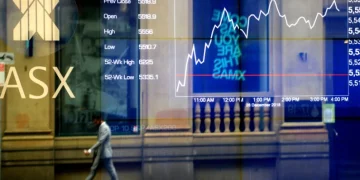Introduction
In the second quarter of 2024, social media platforms across the United States were flooded with upbeat conversations about credit card usage. Twitter threads, Reddit posts, and TikTok videos highlighted savvy spending habits, generous cashback offers, and innovative fintech solutions that made credit card management easier and more rewarding. Sentiment analysis tools recorded a significant surge in positive posts mentioning credit cards, signaling strong consumer confidence. Yet, during this same period, the official credit card default rate climbed from 3.1% to 3.8%, revealing a troubling disconnect. This paradox raises a fundamental question: Why did the optimistic social media sentiment diverge so sharply from the worsening default figures? Understanding this discrepancy is vital for investors, lenders, and policymakers aiming to decode the signals behind consumer credit behavior in a digital world.
Key Data and Background
The rise in positive social media sentiment around credit cards in Q2 2024 stemmed from several factors. Inflationary pressures, which had weighed on consumers in previous quarters, showed signs of easing, encouraging more confident spending. Fintech companies aggressively promoted rewards programs, flexible payment plans, and budgeting apps that attracted wide engagement online. Data from sentiment analysis firms showed a 20-25% increase in positive credit card-related posts compared to Q1. Viral content from financial influencers explaining cashback optimization and smart credit management further boosted the optimistic narrative.
However, the official financial data painted a contrasting picture. According to the Federal Reserve and credit bureaus, the 30+ day delinquency rate on credit card debt rose from 3.1% in Q1 2024 to 3.8% in Q2, marking a notable 23% jump. This rise indicates that a growing number of consumers struggled to meet their credit obligations despite the upbeat chatter online. Revolving credit outstanding increased by $27 billion in the quarter to $1.14 trillion, indicating a surge in borrowing that may not have been sustainable. Additionally, alternative financing products like buy-now-pay-later services gained popularity, sometimes bypassing traditional credit checks and risk controls, which added hidden risk layers to consumer debt profiles. This divergence suggests that social media positivity did not translate into financial stability, underscoring the complexity of consumer credit health in the digital age.
Cross-Market Impact
The divergence between social media sentiment and actual default rates triggered notable consequences across financial markets. Consumer lending stocks became highly volatile as investors grappled with conflicting signals: upbeat consumer chatter suggested robust spending, while rising defaults raised caution. Shares of major credit card issuers and fintech lenders saw price swings of 15-20% in Q2 2024, reflecting investor uncertainty. Banks, confronted with increasing delinquency rates, began tightening lending standards and raising loan loss reserves, as seen in Citigroup’s Q3 2024 financial reports highlighting increased credit loss provisions. However, these strategic adjustments lagged behind shifts in consumer sentiment, revealing a cautious but reactive credit environment.

Historically, this scenario resembles the 2013 “taper tantrum,” when markets abruptly reacted to Federal Reserve policy changes, but key differences exist. Unlike 2013’s policy-driven shock, the 2024 divergence largely arises from behavioral finance dynamics amplified by social media platforms. Consumer optimism expressed digitally did not align with fundamental credit stress, a phenomenon relatively new to credit markets and demanding fresh analytical frameworks.
The effects rippled beyond credit markets. Retail and consumer discretionary sectors experienced increased volatility tied to consumer credit availability and spending behavior. This interrelation highlights how sentiment-driven narratives can influence broader financial ecosystems in ways that traditional economic indicators might miss.
Expert Viewpoints
Opinions on the reasons behind this divergence remain sharply divided. Bank of America’s research team argues that consumer sentiment often leads credit market trends. They contend that social media positivity reflects early-stage optimism, encouraging increased borrowing before credit stress becomes apparent. In this view, sentiment is a forward-looking indicator that temporarily masks underlying risks until defaults eventually catch up.
Conversely, credit risk consultants warn that social media tends to amplify overly optimistic narratives, especially among younger consumers who may underestimate the dangers of rising debt. These experts caution against relying heavily on digital sentiment as a signal for credit quality, emphasizing that such narratives can produce misleading market signals.
Adding another layer, Nobel laureate Robert Shiller critiques traditional risk models for overlooking behavioral influences intensified by social media. Shiller suggests that digital platforms create “social amplification,” where consumer confidence swings sharply and independently from fundamental credit conditions. This challenges established models and calls for integrating behavioral data into risk assessments.
Institutional reports from Goldman Sachs and Morgan Stanley align with this mixed view. Both stress that while sentiment indexes add value, they must be considered alongside hard credit data to avoid misjudging consumer credit health.
Future Outlook and Strategy
Looking forward to 2025, three possible scenarios stand out. The optimistic path envisions sustained wage growth and easing inflation aligning consumer sentiment with improving credit conditions. In this scenario, fintech innovations promote responsible borrowing, and market volatility subsides. The pessimistic scenario assumes rising living costs and stagnant wages exacerbate financial strain, driving defaults higher despite continued social media optimism. This would pressure credit markets and tighten lending. The moderate scenario foresees ongoing volatility, with sentiment and credit metrics fluctuating in tandem. Financial institutions would need agile risk management, blending traditional credit data with real-time sentiment monitoring.
Investors should adopt strategies that integrate sentiment analysis with credit risk metrics to anticipate market shifts effectively. Tracking delinquency trends in vulnerable demographics most influenced by social media is crucial. Additionally, monitoring bank provisioning and regulatory signals can provide early warnings of tightening credit conditions. This multi-dimensional approach can help navigate the complex interplay of perception and financial realities.
Conclusion
The disconnect between rising social media optimism around US credit card use and worsening default rates in Q2 2024 highlights the nuanced relationship between consumer sentiment and financial fundamentals in a digitally connected world. While positive online narratives capture consumer enthusiasm, they often fail to reflect underlying credit risks accurately. Addressing this gap is essential for market participants seeking to understand and manage credit risk effectively. How can financial institutions better combine behavioral insights from social media with traditional credit data to improve risk forecasting and decision-making?





































